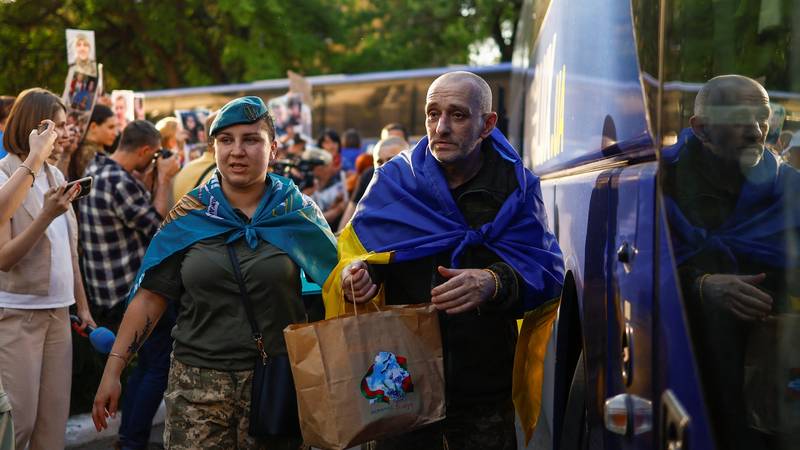It is estimated that more than 20,000 homeless people in Flanders, Minister Gennez announces the action plan

Counts happened in the Westhoek, 22 municipalities around Antwerp city and the city of Aalst. Based on that and the four earlier counts in other regions, the researchers are the new estimate. In October 2023 the number of homeless people was still estimated on 19,479.
The counted homeless people do not answer the man’s cliché with beard on a bench at the station, notes the Flemish Minister for Welfare Caroline Gennez (Vooruit). After all, a minority of the total group is staying on the street: 5 percent. A much larger share is staying with family or friends (32 percent) or in care or temporary stay (27 percent).
Good 6,300 of the estimated number are children, a third of the good 14,000 adults are women. Women stay relatively more often in temporary care initiatives and with family and friends.
More than a third lives in cities and municipalities that count fewer than 50,000 inhabitants: 13 percent in municipalities with less than 15,000 inhabitants, 20 percent in municipalities between 15,000 and 50,000 inhabitants. About half stay in one of the eleven center cities.
On the Telddag itself, 2,413 people were counted in the three regions, one of whom is a third minor. One of them was counted in the public space in the Antwerp region of Kina. The largest group of minors (44 percent) resides in daycare or temporary stay and another 23 percent with family and friends. 17 percent threatens a clearing within the month.
The share of women varied between 30 and 40 percent in the three regions, the number of young adults in Aalst and Kina was 20 percent, in the Westhoek the age category 18-25 accounted for 28 percent. The researchers could not immediately give a comprehensive explanation for that remarkably high number.
“Non-visible part of IJsberg”
For Professor Koen Hermans, who scientifically supported research from the KUAS KUAS van de KU Leuven, the latest figures confirm earlier findings around roof and homelessness. « We bring the non-visible part of the iceberg that roof and homelessness is so in the picture, and see that the homeless person does not exist. It is also about single mothers and families with children, people with a precarious residence statute, young adults … It is also striking that a third of the roof and homeless has been in that situation.
Flemish MP Loes Vandromme (CD&V) was, as ships competent for well -being in Poperinge, involved in the count. She sees in the figures confirmed that homelessness is also a problem in the Westhoek, but at the same time finds that the range of specialized service and assistance in the region is « often insufficient ». Now that the municipal authorities are making plenty of work on their multi -year plan, the results are coming at an interesting moment, Vandromme said.
The Interfederal Steunpunt to combat poverty organizes De counts, commissioned by the Flemish government and with scientific support of LUCAS. In total, cities and municipalities have been counted in 194 in 194. « Regular and uniform counts in the different regions help to collect similar figures, » it sounds. « Clear figures are needed for an efficient policy that fights homelessness. »
Also in Wallonia was counted in various regions on October 18. Those results will be announced next month.
A new count is planned in just over six months. In which three Flemish regions that will happen, it will soon be decided.
Minister Gennez announces action plan
The most recent figures about homelessness are a wake-up call for Flemish Minister for Welfare Caroline Gennez (Vooruit). « Homelessness is gradually becoming endemic, » says Gennez. Based on a count in three regions, mid-October, and four previous counts, researchers estimate the number of homeless people in Flanders at 20,363. When the results announced, Gennez said that, together with party mate and Minister of Housing Melissa Depraetere, she is working on an Action Plan for Roof and Homelessness that must be complete this fall.
« Every child deserves a safe, stable and warm place to grow up, especially in a rich region like Flanders, » says Gennez. « That is why it is extremely important to combat and prevent homelessness. » She therefore repeats the large investments in the construction and renovation of social housing that the Flemish Government is planning: 6 billion in the coming years, in order to shorten the waiting lists and reduce the pressure on the private rental market.
In addition, there will be an action plan, in which Gennez and Depraetere will put the emphasis on Housing First. As a minister for the big cities policy in the previous federal government, Gennez also focused on a roof over the head. It is only with a roof over the head that can make the homeless work on a course or the search for work, is the approach of the Housing First-Tacks. « That approach works, » says Gennez. « It takes people sustainably from the street and for every euro invested you save 2.5 euros in avoids hospital costs. For those who have no address, life is simply so much harder. »
In addition, Gennez also wants to focus on young adults in the action plan. The counts of mid-October learned that their share was not negligible: in Aalst and the Kina region, 22 municipalities around Antwerp, their share was already high by 20 percent, but in the Westhoek the age category 18-25 represented no less than 28 percent.
As a Flemish Minister for Welfare, Gennez is also competent for youth assistance, and in her explanation she reminded the death of 18-year-old Jordy. He died in August 2016 in a tent in the Blaarmeersen Ghent, shortly after he had left the institution where he was staying. « We have to focus prominently on that group of young adults and institution leaves, a group that slips too often through the meshes of the net, » Gennez said. « It is important to work on young people and to help them further in their lives as early as possible. »







